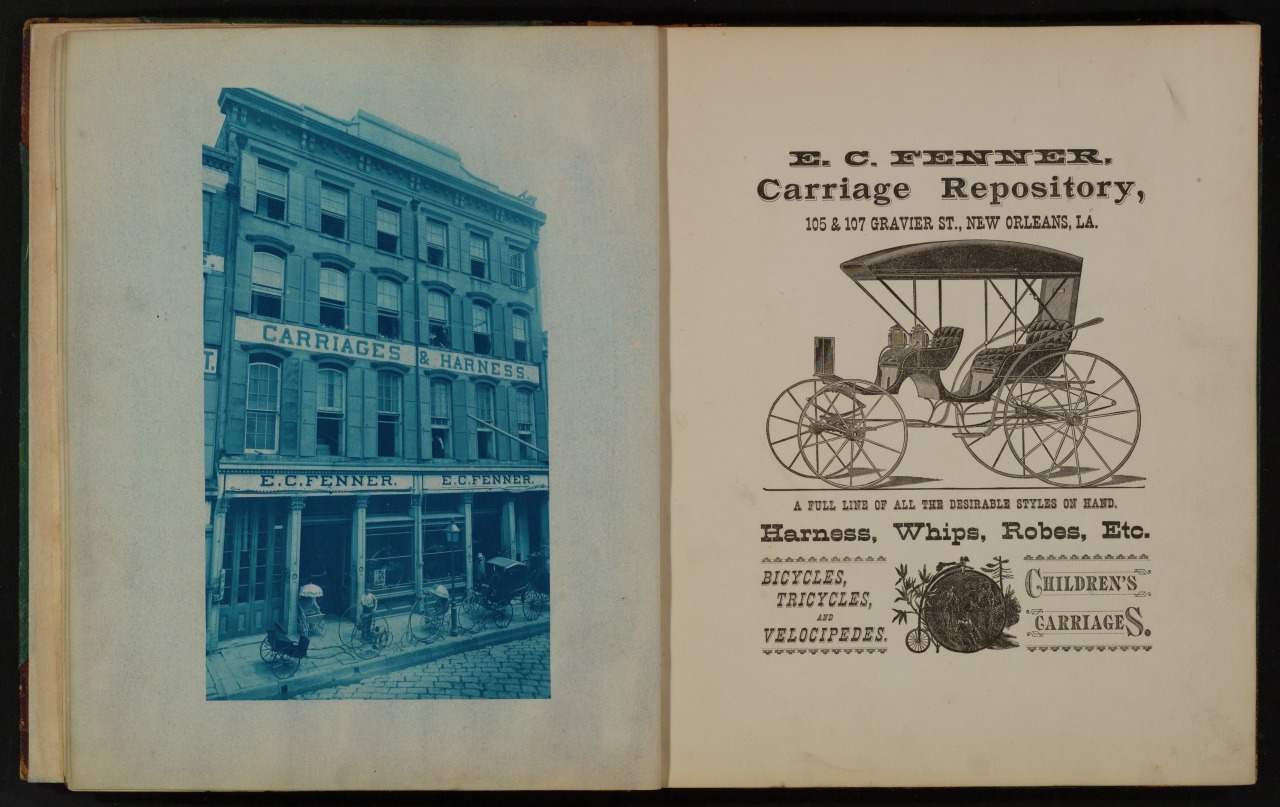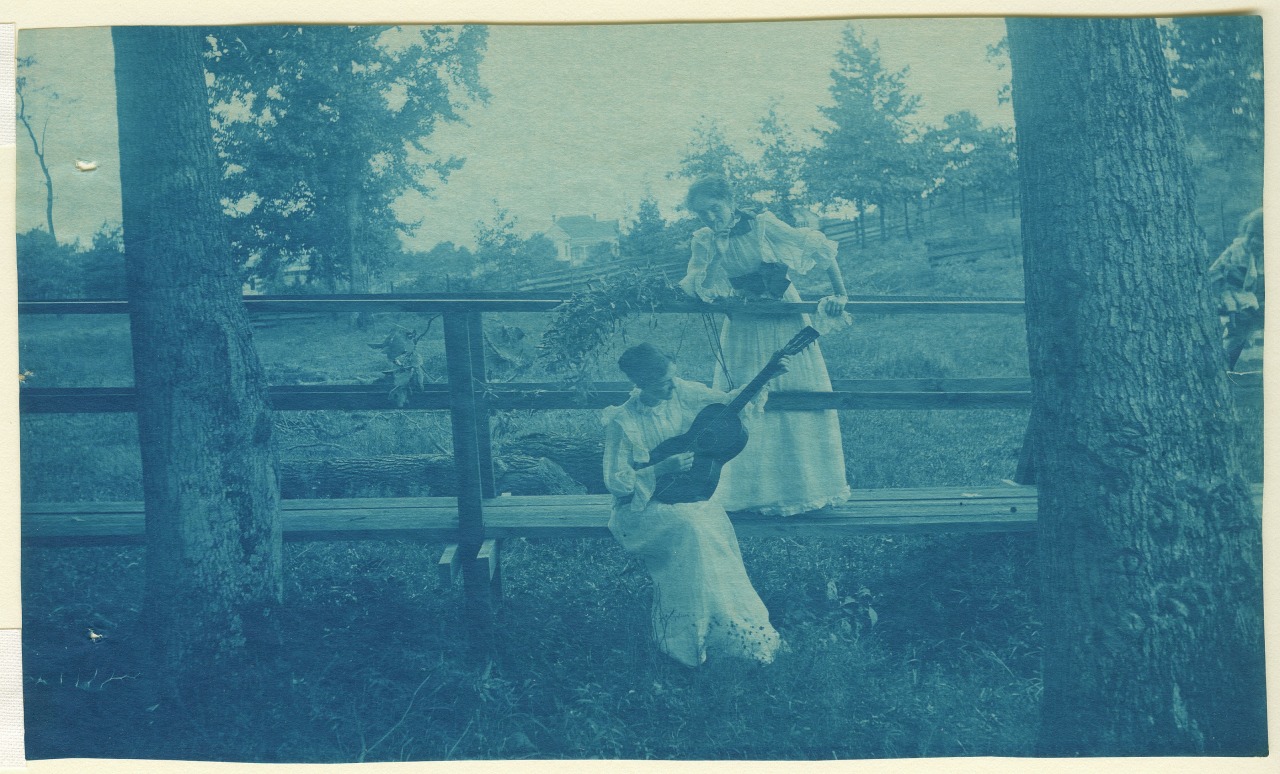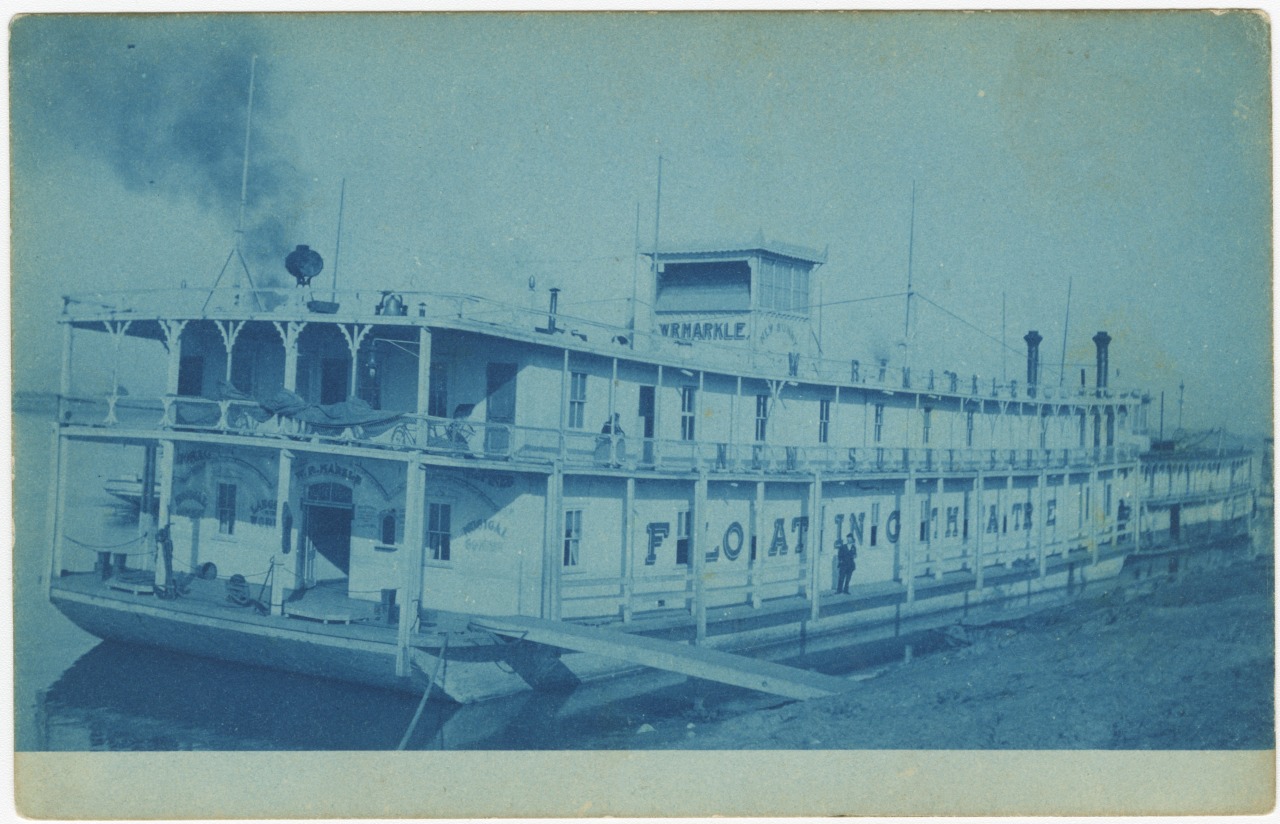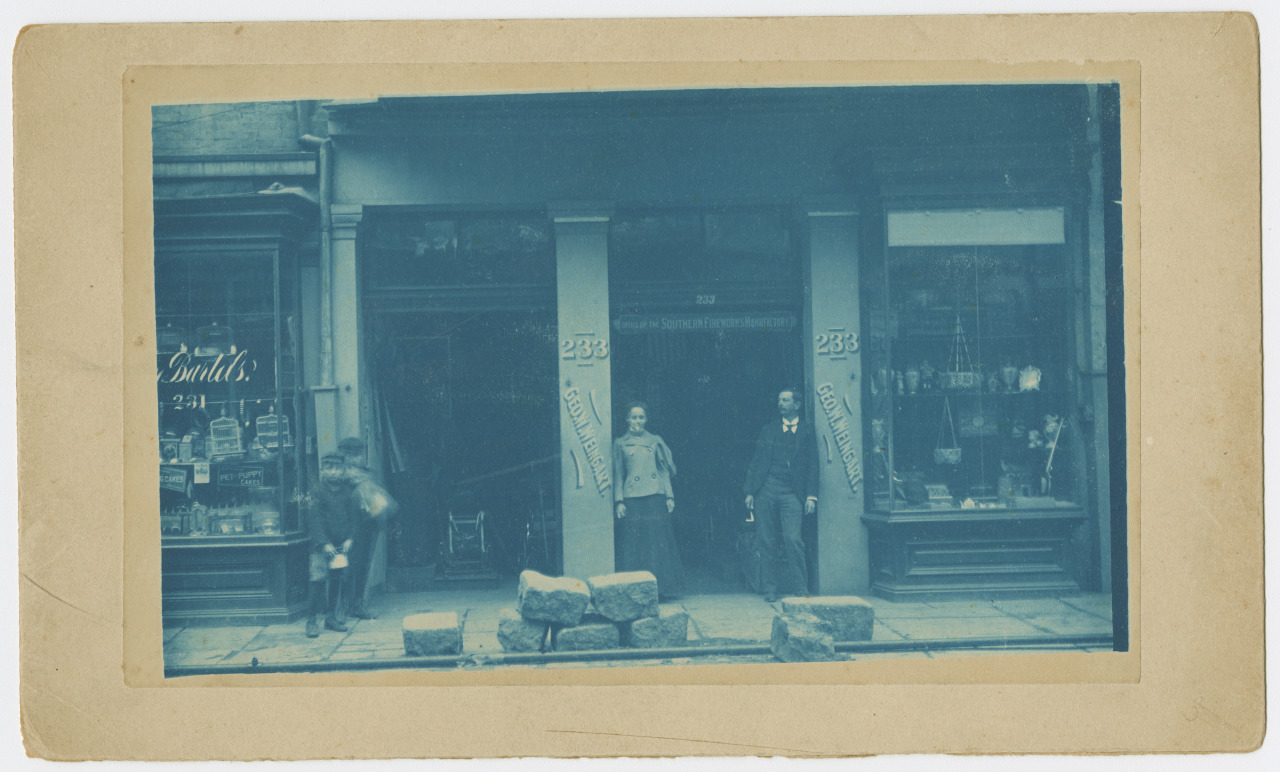The cyanotype process has existed nearly since the inception of photography itself, and cyanotypes are immediately recognizable by their vibrant cyan blue tones. The process was invented in 1842 by the Englishman Sir John F. W. Herschel (1792–1871), who intended it for reproducing mathematical tables. It was also used for reproducing technical drawings, known as blueprints.
The cyanotype process is quite simple. It uses light-sensitive iron salts—potassium ferricyanide and ferric ammonium citrate—rather than light-sensitive silver salts. The salts are sensitive to ultraviolet light and must be applied either in the dark or under weak light with little ultraviolet content. The image is produced through contact printing, by pressing a negative or object directly to the surface and exposing the paper to light (historically sunlight). Cyanotypes can take fifteen minutes for ample exposure, as the iron salts altered by ultraviolet light react with ferricyanide to create an insoluble blue dye known as Prussian blue. To develop the cyanotype, the paper is simply washed in plain water. The areas exposed to light become blue shadows and middle tones; the excess, unexposed iron salts are washed away, creating highlights.
Due to its uncomplicated nature and processing, the cyanotype process has been used by photographers in the field to proof negatives. Because it is an inexpensive and simple process, presensitized paper was manufactured and sold for mass use. Amateur photographers were able to use the cyanotype process to make prints at home, since a darkroom was not required.
Herschel originally published his findings about the cyanotype process in a paper titled “On the Action of the Rays of the Solar Spectrum on Vegetable Colours, and on Some New Photographic Processes.” A year after its invention, the process was used in the earliest-known photographically illustrated book, Photographs of British Algae: Cyanotype Impressions (1843), by Anna Atkins (1799–1871), which used cyanotypes for both the images and the text.

Photographic Album of the City of New Orleans (title page)
by E. T. Adams, photographer
New Orleans: Hofeline and Adams, 1887
The Historic New Orleans Collection, gift of Ralph M. Pons, 77-224-RL

Photographic Album of the City of New Orleans (interior pages)
by E. T. Adams, photographer
New Orleans: Hofeline and Adams, 1887
The Historic New Orleans Collection, gift of Ralph M. Pons, 77-224-RL

Carrie Murphy and Sue Nall
cyanotype; ca. 1908
by an unknown photographer
The Historic New Orleans Collection, 1981.271.19

W. R. Markle Floating Theatre
cyanotype postcard; ca. 1905
by an unknown photographer
The Historic New Orleans Collection, 1981.350.183

Belle Alliance, sugar plantation
cyanotype postcard; 1905
by an unknown photographer
The Historic New Orleans Collection, 1982.55.71

Bartel’s pet store and Weingart’s office of the Southern Fireworks Manufactory, Decatur Street
cyanotype; ca. 1910
by an unknown photographer
The Historic New Orleans Collection, gift of Audrey Moulin Stier, 2003.0167.2
